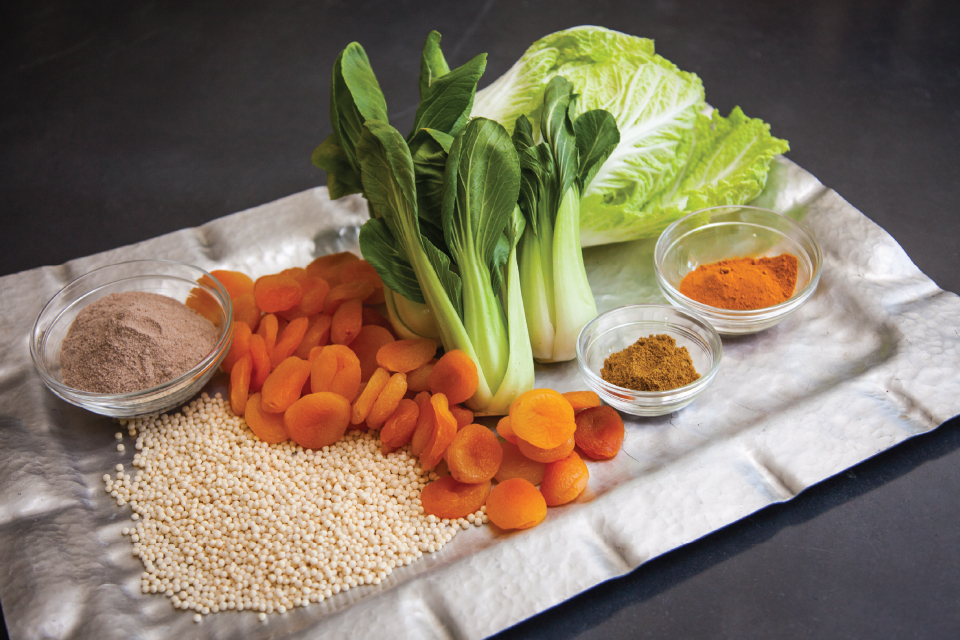Travel the World with Your Fork

Americans are lucky to live in a country with a melting pot of cultures, and this includes some amazing food from all over the world. Many traditional cultural foods have become integrated into daily diets, and many of these dishes provide key nutrients that may help prevent chronic disease. A fun way to make any diet healthier is to incorporate some of these recipe suggestions, or swap out ingredients in favorite recipes for some new flavors. Not a cook? Then opt to try some of these items at local restaurants.
Indian
Indian foods bring to mind the delicious spices, such as turmeric and cumin, which make up traditional curries and dal recipes. Both of these spices are being studied to determine their potential for serving as antioxidants in the body and as cancer-fighting agents. Research is ongoing, but adding these two spices to dishes is a great way to start sampling Indian flavors.
At a restaurant, curries are usually served with rice or naan; if preparing curries at home, adding a good helping of vegetables such as broccoli, green beans, onions, or carrots is a healthful option. Dal recipes contain grain legumes (called pulses), such as lentils, dried peas, or beans, as their protein source and are rich in fiber and B vitamins. Set a goal of 21–38 grams of daily fiber—the exact amount will depend upon gender and age. One serving of a traditional dal can provide approximately 10 grams, a good start toward meeting that daily requirement.
African
The cuisines of Africa are varied. According to Oldways, a nonprofit food and nutrition education organization, “couscous, sorghum, millet, and rice were enjoyed as the bases of meals, or as porridges and side….[In the Horn of Africa], injera (a flat bread made out of teff, sorghum, or whole wheat) and beans blended with spices, like lentils, fava beans, and chickpeas is used as the base of meals.”
There is a great recipe for injera on exploratorium.edu and an engaging explanation for how to use the bread as a utensil to scoop up the meal. Teff, a whole grain used in injera recipes, is nutrient dense; 1 cup of cooked teff provides 123mg of calcium. According to the Whole Grain Council, “Its protein content (around 14 percent) is largely easily digested albumins (similar to a vegetable version of egg whites).” Furthermore, teff is gluten-free, which is good news for those on restricted diets, as it is widely available in grocery stores and can be used in many recipes.
Mediterranean
Many Americans have heard that the Mediterranean provides a “heart-healthy” diet that may increase longevity and decrease the risk of chronic disease. Studies seem to back up these claims, and Mediterranean foods are easily adaptable, as many traditional items, such as yogurt and olive oil, are already part of a mainstream American diet. Apricots and figs (fresh and dried) are popular fruit choices as they make great sweet treats that are loaded with vitamins and minerals. Apricots are high in vitamins A and C, fiber, and the electrolyte potassium. A cup of sliced apricots after a long workout can help replace 427mgs of potassium and provide 18.5g of carbohydrate. Figs are also high in potassium and contain manganese, which, according to the Linus Institute, plays an important role as a powerful antioxidant in the mitochondria, metabolism of carbohydrates, amino acids and cholesterol, wound healing, and bone development.
Chinese
It’s not always easy to find healthy foods at a restaurant buffet, but Chinese food can provide an array of nutrients. When cooking at home, focus on adding brightly colored vegetables to the wok for extra fiber as well as vitamins A and C. Bok choy and Napa cabbage are tasty additions. Both are part of the cruciferous family, and researchers are investigating their ability to prevent and fight cancer. Ginger, often promoted as an anti-nausea spice, is another easy addition to soups and stir-fries. Study results have been mixed, but whether it settles the stomach or not, ginger adds a zesty flavor. Use a microplane grater to prepare fresh ginger and include it in recipes simply and quickly.
Whether eating at home or a restaurant, foods from global cultures fit into a balanced American diet and provide a fresh, fun, and new source of vitamins, minerals, and antioxidants to spice up any nutritional routine. Try this world of healthy flavors one forkful at a time.






